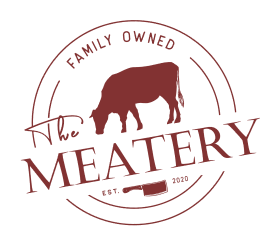The name Wagyu evokes a sense of luxury and unparalleled culinary indulgence. Marbled with fat that resembles snowflakes, Wagyu beef boasts a melt-in-your-mouth texture and an intensely rich flavor profile. But within the world of Wagyu, there exists a distinction between the original Japanese Wagyu and its Australian counterpart. While both offer exceptional quality, understanding their key differences can help you make the perfect selection for your next culinary adventure.
Lineage and Breeding: A Tale of Two Countries
The story of Wagyu begins in Japan, where the breed was meticulously developed over centuries. These purebred cattle, known as Kuroge Washu, are prized for their unique genetic predisposition to produce abundant marbling. In contrast, Australian Wagyu is a descendant of the Japanese breed, but with a twist. Following the introduction of Wagyu genetics to Australia in the 1990s, breeders strategically crossbred them with Angus or Hereford cattle. This resulted in a Wagyu blend, typically containing 50% to 90% Wagyu genetics.
While the purebred Japanese Wagyu maintains a distinct genetic lineage, the Australian Wagyu offers a wider range of genetic variations. This diversity can influence the final product, leading to some interesting distinctions.
Marbling Matters: The Heart of Wagyu Distinction
The hallmark of Wagyu beef is its marbling, the intricate web of intramuscular fat that contributes to its tenderness and flavor. Here's where the first significant difference between Australian and Japanese A5 Wagyu emerges.
Japanese Wagyu, particularly those graded A5, possess the highest level of marbling achievable. These cattle are meticulously raised with a focus on maximizing marbling. Their diet is carefully controlled, often featuring grain finishing in their final months, which promotes extensive fat deposition within the muscle fibers. The resulting meat has a remarkably high-fat content, creating an intensely rich, almost buttery flavor and a melt-in-your-mouth texture.
Australian Wagyu, on the other hand, generally exhibits a lower degree of marbling compared to Japanese A5. The influence of other breeds in their genetic makeup, coupled with a less intensive feeding regimen, leads to a leaner product. However, this doesn't diminish the quality of Australian Wagyu. The marbling, while less pronounced, is still beautifully dispersed, resulting in meat that is incredibly flavorful and undeniably tender. This characteristic makes Australian Wagyu a fantastic choice for those who appreciate the luxurious aspects of Wagyu without the overwhelming richness of the highest-graded Japanese cuts.
Flavor Profile: A Nuance of Taste
The difference in marbling content translates into a subtle variation in flavor profile. Japanese A5 Wagyu boasts a deep, intensely beefy flavor with a pronounced sweetness often described as "buttery." This sweetness comes from the breakdown of intramuscular fat during cooking. The high-fat content can be overwhelming for some palates, hence the recommendation to cook and serve Japanese A5 Wagyu in very thin slices.
Australian Wagyu, with its slightly lower marbling, offers a more balanced flavor profile. The distinct beefiness of Wagyu is still present, but it's complemented by a more subtle sweetness and a touch of minerality. This characteristic makes Australian Wagyu a more versatile option, suitable for enjoying in larger portions and a wider variety of cooking methods.
Ultimately, the preferred flavor profile is a matter of personal taste. Some may crave the intense richness of Japanese A5, while others might favor the balanced and nuanced flavors of Australian Wagyu.
Beyond the Plate: Raising Practices and Ethics
Both Australian and Japanese Wagyu producers adhere to high standards of animal welfare. However, there are slight variations in their approaches. Japanese Wagyu cattle are known for being pampered. They are typically raised in meticulously clean environments, often brushed and massaged to promote blood flow and marbling. Their diet is carefully controlled, with a strong focus on grain finishing in the final months before slaughter.
Australian Wagyu producers, while maintaining excellent animal welfare practices, tend to favor a more natural approach. Cattle often have access to pastures for grazing, supplementing their diet with grain to achieve desired marbling levels. This method allows the cattle to engage in more natural behaviors, potentially contributing to a slightly different flavor profile in the final product.
The Price Point: A Consideration for Every Budget
Here's a crucial factor for many consumers: price. Japanese A5 Wagyu, due to its meticulous raising practices, limited production, and exceptionally high marbling score, commands a premium price tag. It is considered a true luxury product, reserved for special occasions or the most discerning palates.
Australian Wagyu, while still a premium product, offers a more accessible price point. The slightly lower marbling content and a less intensive raising process contribute to a more affordable price tag compared to Japanese A5. This makes Australian Wagyu a fantastic option for those who want to experience the exceptional quality of Wagyu without breaking the bank. It allows for more frequent enjoyment and experimentation with a wider variety of cuts and cooking methods.
Selecting the Perfect Wagyu: Finding Your Match
Ultimately, the choice between Australian Wagyu and Japanese A5 Wagyu boils down to personal preference and culinary goals. Consider these factors when making your decision:
- Flavor Profile: Do you crave the intense richness of Japanese A5 or prefer a more balanced and nuanced flavor?
- Cooking Style: Are you planning a luxurious, intimate dinner featuring small, melt-in-your-mouth bites, or a celebratory feast with larger portions?
- Budget: How much are you willing to spend on this culinary experience?
Here's a quick guide to help you navigate the world of Wagyu:
- For the Ultimate Indulgence: If you seek the pinnacle of Wagyu marbling and intense flavor, then Japanese A5 Wagyu is the clear choice. Be prepared for a premium price tag.
- For a Balanced Experience: If you appreciate exceptional quality Wagyu with a more approachable flavor profile and wider versatility in cooking, then Australian Wagyu is a fantastic option.
- For the Budget-Conscious Connoisseur: Australian Wagyu offers a more accessible price point while still delivering a luxurious Wagyu experience.
The Final Sizzle: Where to Find the Perfect Wagyu
No matter your preference, sourcing high-quality Wagyu is essential. Look for reputable butchers or online retailers specializing in premium meats. These vendors can provide expert guidance on selecting the perfect cut based on your needs and preferences.
Here at The Meatery, we take pride in offering a curated selection of both Australian and Japanese Wagyu. Our commitment to quality sourcing ensures you receive the finest cuts, expertly butchered and delivered fresh to your doorstep. Explore our Wagyu collection and embark on your own Wagyu adventure.
Whether you choose the intense richness of Japanese A5 or the balanced elegance of Australian Wagyu, prepare to experience a culinary journey unlike any other. The intricate marbling, the melt-in-your-mouth texture, and the explosion of flavor will leave you wanting more. So, fire up the grill, unleash your inner chef, and savor the luxurious world of Wagyu.









